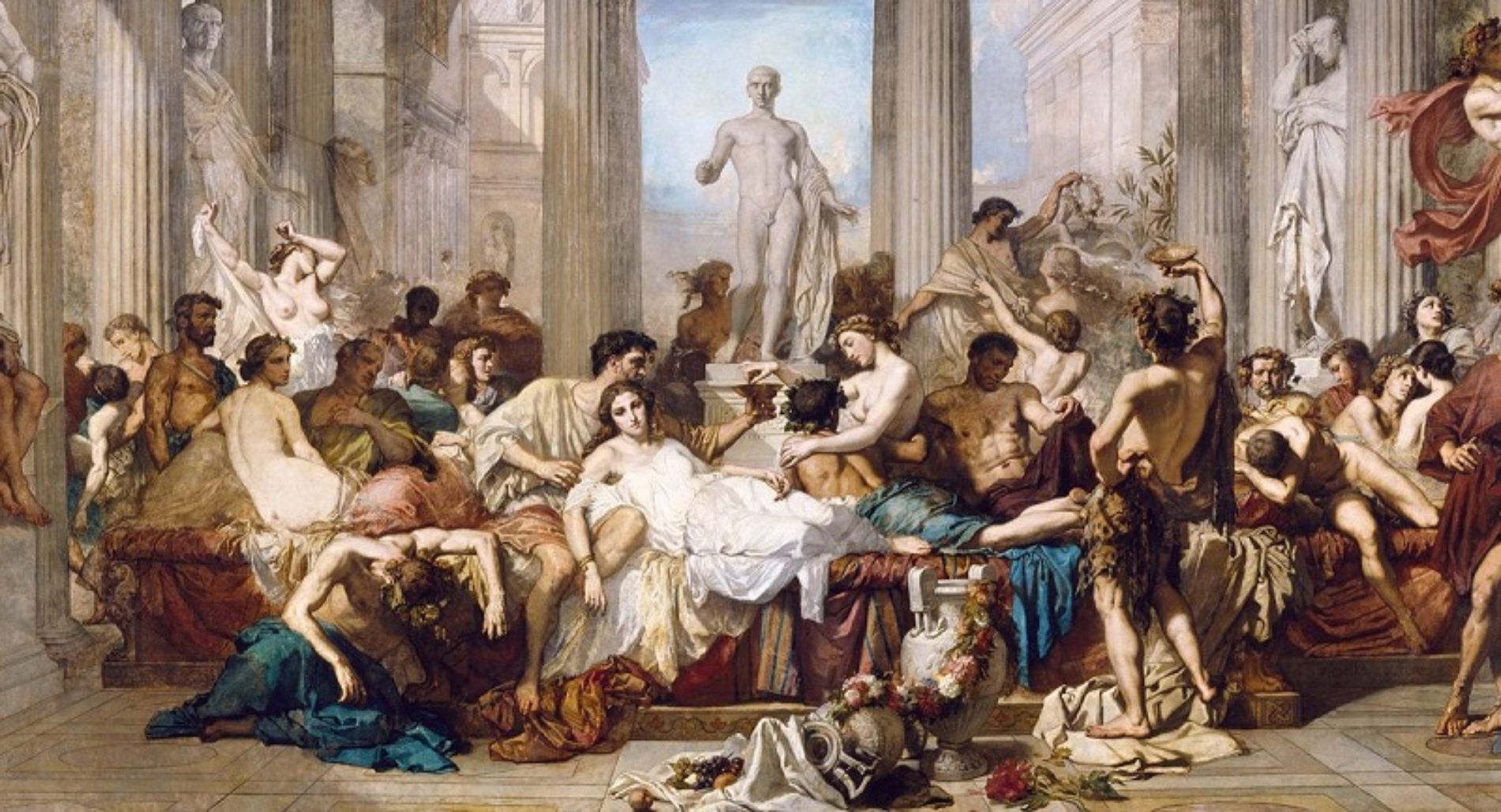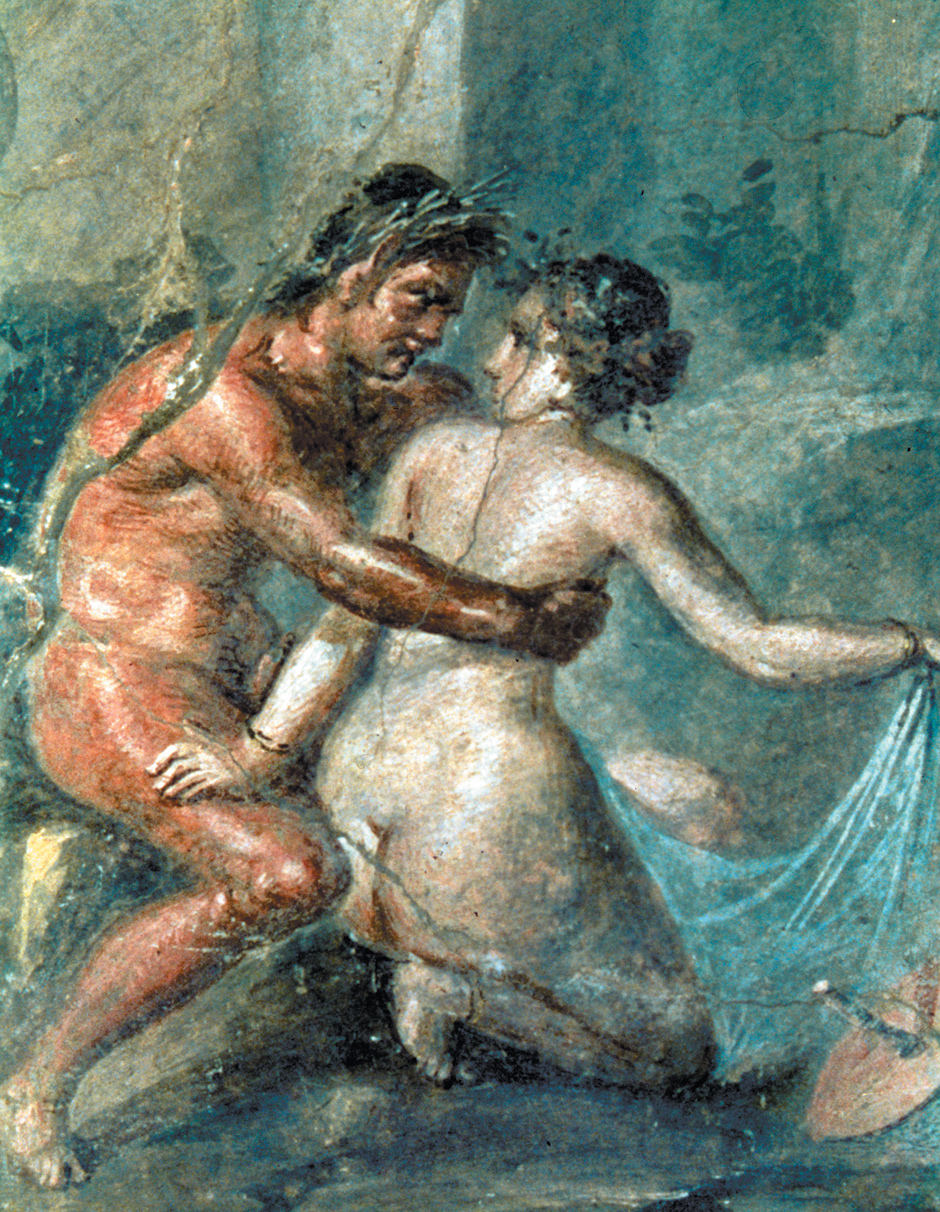Se.xuality is a topic often whitewashed out of our history books, and we rarely see the place of LGBT people in the ancient world mentioned in television documentaries.
Most of us know that the ancient pagan world was more tolerant of homosexuality than the one-god religions that would follow. But how tolerant were the ancient Greeks and Romans? It turns out they weren’t nearly as tolerant as you might like to think.
Neither the Greeks nor the Romans had a concept of homosexuality or heterosexuality.

Men were assumed to be attracted to both males and females, and to express a preference for just one sex was considered eccentric.
But as both societies were intensely patriarchal, what was important in sexual relationships was the status of who did the penetrating and their age.
In this world, the notion of sex between two grown men was deeply taboo as it was seen to reduce the passive partner to the level of a woman. Indeed if the Greeks and Romans did not outlaw it, it was because the shame of the act was punishment enough – though the weight of shame fell mostly on the penetrated.
Of greater taboo still was for an older man to allow himself to be penetrated by a younger man; the modern word ‘pathetic’ derives from the Latin for such a man.

The only act considered more taboo was cunnilingus – to the Ancient’s minds as dangerously close to a man being penetrated by a woman as was possible.
Contrary to popular belief, anal sex for the Greeks and Romans was primarily a heterosexual act. There was no taboo on it occurring between men and women and it was the most reliable form of contraception available, and so would have been a regular part of the sex lives of any married couple.
Where sex between males was deemed acceptable to occur was between men and youths, and in theory, it was only supposed to be inter-crucial (where one partner grips the other’s penis between his thighs), though from the writings the Greeks and Romans have left to us, it was often not.

In both societies, youths were considered to be able to consent to sex from around their mid teens, which was similar to the age that girls were considered ready for marriage, and it was acceptable for youths to be in same-sex relationships until they could grow a full beard; and for this reason, there were all manner of depilatory products on sale in order to help you keep your boyfriend respectable!
After this age in Greece, the young man was expected to find a wife and go about starting a family, having been mentored by his older partner, with the two men staying friends. In practice, however, many of these relationships probably would have carried on behind closed doors. In Greece, such relationships occurred between free born males, though there were also male prostitutes.

Many of the most famous names to come down to us in history from the Greek world have been same-sex attracted – from bisexual Alexander the Great whose father Phillip destroyed the all-gay Sacred Band of Thebes, to the philosophers Plato and Socrates.
Few lesbian voices come to us from the ancient world but the lyric poet Sappho is a notable exception and her love poems for other women speak down to us through the ages. And of course, the island of her birth, Lesbos, gives us the word ‘lesbian’ that we still use today.
Sex between women wasn’t illegal, but, like the Victorians, the Greeks and Romans simply refused to believe it happened. In comparison, sex between men in the Roman world was a mostly more sinister affair. Having sex with a freeborn Roman male could see you up on charges for ruining the youth’s future reputation. But slaves and foreigners were all fair game. Male and female prostitutes openly plied their trade on the streets of Rome. But in truth, any slave was a sex slave if their master so desired, and it was primarily through master-slave relationships that sex between males occurred in Ancient Rome.

Thus when the emperor Hadrian took a male lover in the form of a Bithynian youth named Antinous, as a foreigner, it was perfectly acceptable for Antinous to appear in public next to the emperor and his wife, Vibia Sabina, as his lover. Hadrian and Antinous were lovers for five years until Antinous fell from a boat in the Nile and drowned. Some have suggested he killed himself to avoid shaming the emperor as he grew older. Heartbroken, Hadrian had Antinous declared a god, built temples to him all over the empire, named a star after him and built a city in Egypt, Antinopolis, in his honor.
When the Roman Empire became Christian, the temples of the cult of Antinous were destroyed, though many of the statues ended up in the Vatican art collections where they were seen by the artist Raphael, who used his likeness when painting angels as his model of male perfection.

Both the Greeks and Romans could appeal to religion in their belief that their behavior was moral, though we might have a different view on what is proper today.
For the Greeks, Zeus had his male lover Ganymede, and Plato rated this love as higher than that found in marriage. The Romans had the same gods by different names, so Zeus became Jupiter and Ganymede became Catamitus. Homosexual characters were often mocked as figures of fun in bawdy Roman comedies, but at the same time same-sex couples, cross dressers and male prostitutes would have been common sights on the streets.
And some couples did buck the discrimination that was thrown at them by publicly celebrating their commitment through same-sex marriage. These include two emperors, Nero and Elagabalus, but we know of many others. Such marriages were not legally recognized, and by 342 AD, the dual Christian emperors Constantius and Constans had them banned on threat of death, and homosexuality in the Roman Empire was silenced for centuries to come.

So what is the verdict on how the Greek and Roman civilizations treated their LGBT citizens? Certainly there was a lot of discrimination and extreme social stigma for any relationship between men that fell outside of a very tight set of parameters.
However compared to what was to follow into much of the 20th Century, they were centuries ahead of their time.